Multi-Scale Seismic Velocity Models for the San Andreas Fault System in the Western US
Date: April 4, 2025 (08:30am – 4:30pm Pacific)
Location: Online via Zoom
Workshop Organizers: Patricia Persaud (U Arizona), Kim Olsen (SDSU), Artie Rodgers (LLNL), Phil Maechling (USC), Yehuda Ben-Zion (USC)
SCEC hosted a workshop to accelerate the development and improvement of multi-scale seismic velocity models that are essential for accurate ground motion simulations and seismic hazard assessments in California and beyond. While significant progress has been made, challenges remain in integrating new data, improving resolution, merging models, and assessing uncertainties. This workshop focused on planning a coordinated research approach to develop multi-scale P- and S-wave velocity models for the San Andreas fault system in the Western US, targeting seismic wavefield simulations up to 5-10 Hz, a frequency range critical for engineering applications. Participants discussed tomography workflows, strategies for merging high-resolution local models and regional models, integrating diverse geophysical data, and developing robust uncertainty quantification methods. The workshop also addressed the development of essential IT tools for model management and access, ensuring practical implementation of workshop recommendations. Discussions at the workshop will guide the development of the next generation of SCEC CVMs, which will advance our understanding of crustal structures and seismic hazards.
Community Velocity Models (CVMs) provide foundational information for many basic and applied topics including the determination of earthquake locations and other source properties, imaging of the subsurface, and simulations of ground motions for use in seismic hazard models. However, current large-scale velocity models within the state of California lack the deterministic information needed for ground motion simulations at the high frequencies required in engineering applications. To address this limitation, the next generation of CVMs should resolve fine-scale seismic structure, in particular in basins, the shallow crust, and around fault zones to allow simulations of ground motion in areas of high population density and critical infrastructure to frequencies of interest to engineers. The next generation of CVMs should be multi-scale while also covering the full spatial domain of the San Andreas fault system (SAFS) in the Western US. This workshop focused on advancing the development of such multi-scale velocity models that would be needed to uniformly develop a statewide seismic hazard model and for other applications. The workshop was divided into three main parts. The first session aimed at summarizing the state-of-the-art in current velocity (VP and VS) models available for the SAFS in the Western US with a focus on the different methodologies, resolutions, datasets, and spatial domains of these models. This session also covered the topic of critical data gaps and data needs such as underexplored geographic domains, full seismic characterization of crustal properties (seismic anisotropy and seismic attenuation), and model uncertainties. The second session discussed current approaches for combining velocity models to produce multi-scale models and the methods used to evaluate these models with an emphasis on improving future ground motion predictions across a broad range of frequencies. The third session introduced current IT tools available for interacting with, maintaining, querying, and visualizing models. Workshop discussions focused on future directions and the short- and near-term goals for critical data gathering, development of new methodologies, and resource needs.
The workshop saw a wide range of user needs and interests from the attendees including discussions on improving the spatial resolution of the CVMs; accurately representing the offshore regions, sedimentary basins and near-surface seismic velocities; implementing realistic seismic attenuation in ground motion simulations; using non-seismic datasets in model development and validation; and developing multiple velocity models that capture the epistemic uncertainty in the 3D seismic structure. In contrast, the preworkshop survey showed, fewer registrants had previously developed models, datasets, or merging algorithms to contribute to enhancing ground motion simulations and seismic hazard assessments in the Western US. This suggests an emerging interest in multi-scale CVMs, of which only a few examples currently exist. Many of the discussions pointed to a long-term research effort noting that recent improvements in the spatial density of datasets and novel techniques including machine learning based methods now facilitate underexplored approaches for building CVMs as well as new applications for the CVMs. Such applications ranged from near-surface to deep-crustal and lithospheric-scale studies. Based on the broad range of applications for multi-scale CVMs highlighted at the workshop including the seismic hazard applications, there is a need for cross-disciplinary discussions and collaborations in the early-stages of the development of these models that should also take into consideration how they are validated and maintained. Discussions at the workshop emphasized four essential areas listed below where a coordinated research effort in developing multi-scale P- and S-wave velocity models for the SAFS in the Western US should focus on making progress.
Presentation materials may be viewed by clicking the links below. PLEASE NOTE: Files are the author’s property. They may contain unpublished or preliminary information and should only be used for reviewing the talk. Only the presentations for which SCEC has received permission to post publicly are included below.
| Time | Agenda Item | Speaker | |
|---|---|---|---|
| 08:30 - 08:40 | Welcome and Overview of Workshop Objectives | Yehuda Ben-Zion | |
Session 1: Current Seismic Velocity Models for the SAFS in the Western US Moderators Kim Olsen and Patricia Persaud | |||
| 08:40 - 09:00 | Use cases for velocity models & required components of statewide velocity model | Artie Rodgers | |
| 09:00 - 09:15 | Overview from SCEC March '24 workshop report | Brad Aagaard | |
| Resolution of Current Velocity Models | |||
| 09:15 - 09:30 | Regional tomographic models | Cliff Thurber | |
| 09:30 - 09:45 | Geology-based models | Oliver Boyd | |
| 09:45 - 10:00 | Basin-scale models | John Shaw | |
| 10:00 - 10:15 | Models of the near surface material | Domniki Asimaki | |
| 10:15 - 10:30 | Discussion: needs and opportunities | All | |
| 10:30 - 10:50 | Break | ||
| Observational Data Gaps | |||
| 10:50 - 11:05 | Geographic areas with critical data needs | Albert Kottke | |
| 11:05 - 11:20 | Seismic attenuation | Chiara Nardoni | |
| 11:20 - 12:00 | Discussion: needs and opportunities | All | |
| 12:00 - 13:00 | Break | ||
Session 2: Methods to Combine and Evaluate Velocity Models Moderators Kim Olsen and Cliff Thurber | |||
| 13:00 - 13:15 | Fusion methods - embedding and smoothing | Alan Juarez-Zuniga | |
| 13:15 - 13:30 | Fusion methods - machine learning (PDF) | Te-Yang Yeh | |
| 13:30 - 13:50 | Estimating epistemic uncertainty in ground motions from 3-D simulations | Norman Abrahamson | |
| 13:50 - 14:30 | Discussion: needs and opportunities | All | |
| 14:30 - 14:50 | Break | ||
Session 3: Tools for Using Models Moderators Patricia Persaud and Artie Rodgers | |||
| 14:50 - 15:10 | Practical aspects of seismic velocity model tools | Phil Maechling | |
| 15:10 - 16:00 | Discussion: needs and opportunities | All | |
| 16:00 - 16:30 | Wrap-up | ||
| Workshop Adjourns | |||
March 4-5, 2024
September 1, 2020
September 7, 2019
October 2, 2018
CEMs are collaborative platforms featuring community-contributed data, models, and tools for earthquake system analysis. They enable 3D visualization, data exploration, sharing, and integrated modeling.
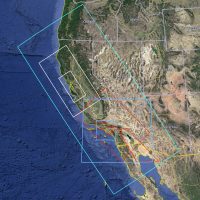
Unified Community Velocity Model (UCVM)
seismic velocities for several California regions
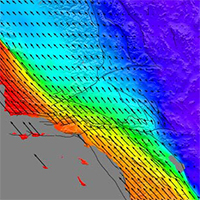
Community Geodetic Model (CGM) Explorer
Earth surface displacement from GNSS and InSAR
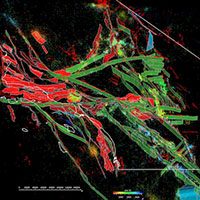
Community Fault Model (CFM) Explorer
3D geometric representations of faults in California
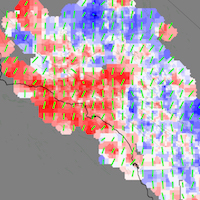
Community Stress Model (CSM) Explorer
suite of models of stress and stressing rate
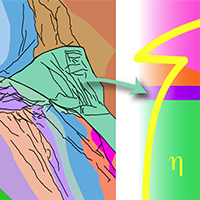
Community Rheology Model (CRM) Viewer
3D ductile rheology of lithosphere in S. California
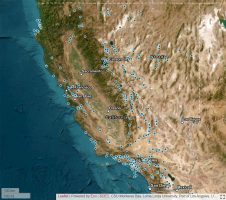
Geologic Slip Rate Database (GSRD)
geologic slip rates for CA, NV, and northern Mexico
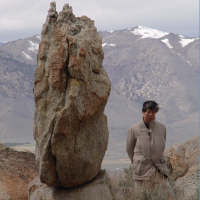
Precariously Balanced Rock (PBR) Database
field-derived data for PBRs in California
| First Name | Last Name | Organization |
|---|---|---|
| Brad | Aagaard | USGS |
| Morteza | Abbasnejadfard | University of Canterbury |
| Rachel | Abercrombie | Boston University |
| Norman | Abrahamson | University of California, Berkeley |
| Claudia | Abril | Ludwig Maximilians University of Munich |
| Nikos | Anterriotis | Aristotle University of Thessaloniki |
| Domniki | Asimaki | Caltech |
| Luciana | Astiz | NSF |
| Michael | Barall | USGS |
| Patrick | Bassal | The Ohio State University |
| Yehuda | Ben-Zion | University of Southern California |
| Akash | Bhatthal | SCEC/USC |
| Brianna | Birkel | University of Southern California |
| Michael | Blanpied | USGS Earthquake Hazards Program |
| Oliver | Boyd | U.S. Geological Survey |
| Ray | CAKIR | Washington Geological Survey |
| Scott | Callaghan | Statewide California Earthquake Center |
| Sara | Carena | Ludwig-Maximilians University Munich |
| Robert | Clayton | Caltech |
| Francesca | DI Luccio | Istituto Nazionale di Geofisica e Vulcanologia |
| Claire | Doody | Lawrence Livermore National Laboratory |
| Ahmed | Elbanna | UIUC |
| Peter | Gerstoft | Univ of California San Diego |
| Angela | Gómez-García | Geosciences Barcelona |
| Hao | Guo | University of Wisconsin-Madison |
| Aakash | Gupta | University of Alaska Fairbanks |
| Ruth | Harris | USGS |
| taimoor | hassan | Bahria University |
| Egill | Haukson | Caltech |
| Yu-Huan | Hsieh | University of Houston |
| Junfei | Huang | Lawrence Berkeley National Laboratory |
| Tran | Huynh | SCEC/USC |
| Alan | Juarez Zuniga | University of Arizona |
| Chris | Justiniano | University of Puerto Rico at Mayagüez |
| Sajan | K C | University of Southern California |
| HyeJeong | Kim | University of Utah |
| Albert | Kottke | PG&E |
| Maxime | Lacour | UC Berkeley |
| Robin | Lee | University of Canterbury |
| Tianjue | Li | Nanyang Technological University, Singapore |
| Fan-Chi | Lin | University of Utah |
| Chuanming | Liu | UT Austin |
| John | Louie | Terēan and the University of Nevada, Reno |
| Philip | Maechling | Statewide California Earthquake Center |
| Jose | Magana | Langan Engineering |
| Christipher | Menges | U.S. Geological Survey |
| Morgan | Moschetti | USGS |
| Rie | Nakata | LBNL |
| Chiara | Nardoni | University of Bologna |
| Craig | Nicholson | UC Santa Barbara |
| Ann | Olesh | Cal Poly Pomona |
| Kim | Olsen | San Diego State University |
| Joses | Omojola | University of Arizona |
| Anupam | Patel | SDSU |
| Edric | Pauk | SCEC/USC |
| Patricia | Persaud | University of Arizona |
| Camilo Ignacio | Pinilla Ramos | SCEC/USC |
| Claudia | Piromallo | Istituto Nazionale di Geofisica e Vulcanologia |
| Andreas | Plesch | Harvard University |
| Erik | Ramirez | UABC |
| Katleho | Ramotso | University of Arizona |
| Arthur | Rodgers | Lawrence Livermore National Laboratory |
| Badie | Rowshandel | California Earthquake Authority |
| Benjamin | Sadler | University of Arizona |
| Pieter-Ewald | Share | Oregon State University |
| John | Shaw | Harvard University |
| Fabio | Silva | SCEC/USC |
| Mei-Hui | Su | SCEC/USC |
| Karen | Sung | UC Berkeley |
| John | Suppe | University of Houston |
| Corina | Tecu | oiq |
| Cliff | Thurber | University of Wisconsin-Madison |
| Ayushi | Tiwari | University of Canterbury |
| Ke | Xu | San Diego State University |
| Te-Yang | Yeh | San Diego State University |
| Farhan | Yousaf | Quaid I Azam University |
| Cm | Z | China University of Geosciences(Wu han) |
| Yuehua | Zeng | USGS |
| Zhengyang | Zhou | Oregon State University |
The Statewide California Earthquake Center (SCEC) fosters a diverse and inclusive community where everyone feels safe, productive, and welcome. We expect all participants in SCEC-supported events to uphold this commitment by adhering to the SCEC Activities Code of Conduct.
The SCEC Annual Meeting brings together 400-500 participants worldwide to share breakthroughs, assess progress, and chart a collaborative path for earthquake science. All of the Center activities are presented, analyzed, and woven into a set of priorities for SCEC to pursue in the future.